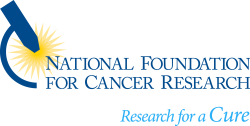With its final pivotal trial moving along as planned, Irvington, NY-based Electro-Optical Sciences is actively initiating partnering discussions for its point-of-case melanoma-detection device.
 MelaFind is a handheld imaging device that emits 10 different wavelengths of light up to 2.5mm deep into the skin in order to capture images of suspicious pigmented skin lesions. This data is then analyzed using mathematical algorithms against a database of melanomas and benign lesions. The “Lesion Classifier” recommends whether the lesion should be biopsied.
MelaFind is a handheld imaging device that emits 10 different wavelengths of light up to 2.5mm deep into the skin in order to capture images of suspicious pigmented skin lesions. This data is then analyzed using mathematical algorithms against a database of melanomas and benign lesions. The “Lesion Classifier” recommends whether the lesion should be biopsied.
Last week, at the Needham & Co. Biotechnology and Medical Technology Conference in New York, the company’s CEO, Joseph Gulfo, provided an update on the development of MelaFind: The final blinded pivotal trial is over 20 percent complete; four pivotal study sites are active, and additional sites will be activated in the coming weeks. Gulfo said he expects the trial to finish sometime in the second half of 2007.
The CEO also noted Electro-Optical’s intention to start searching for potential commercialization partners. “This is an appropriate time for us to begin proactive partnering discussions in anticipation of a potential mid-2008 MelaFind launch,” he said.
In a previous blinded trial examining 352 suspicious pigmented skin lesions, MelaFind had 100% sensitivity in finding a melanoma and achieved 48.4% specificity (compared with dermatologists’ sensitivity of 96.4% and specificity of 28.4%). Specificity, in this case, is the probability that an individual who does not have melanoma will be correctly identified as negative; high specificity reduces the need for biopsies.
According to the National Cancer Institute, skin cancer is the most common form of cancer in the U.S., with over one million cases diagnosed each year. It also is one of the fastest growing cancers in the U.S. and the leading cause of cancer death in women ages 25-30. Melanoma accounts for only 4% of skin cancer cases, but is responsible for 75% of skin cancer deaths.


We have the highest melanoma rate in the world, Queensland Australia. I specialize in this area of cancer, skin cancer and would be interested in trying or trailing your product for commercial purposes here in Australia. I would also be interested in the rights to distribute this product here in Australia if I find it works.
Dr. Michael K. McFall MD. FRACGP